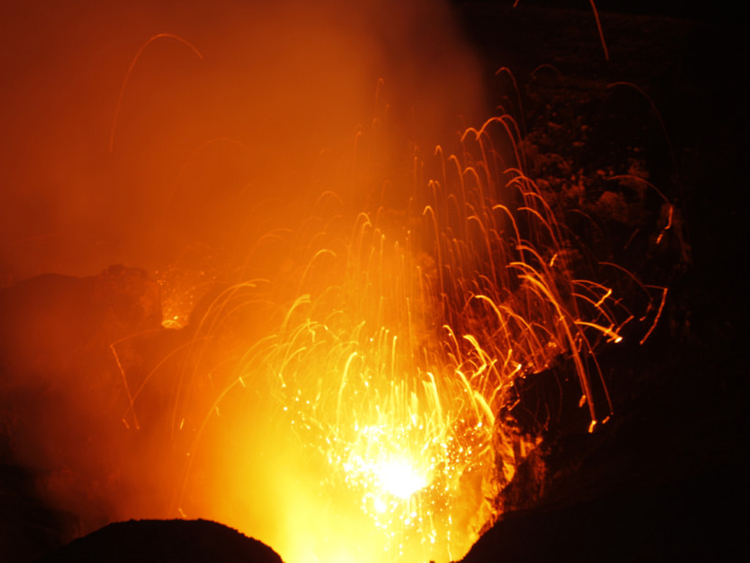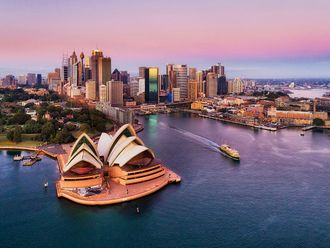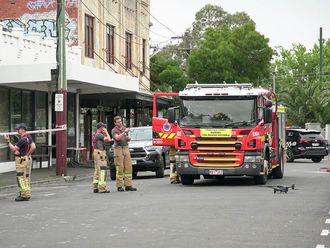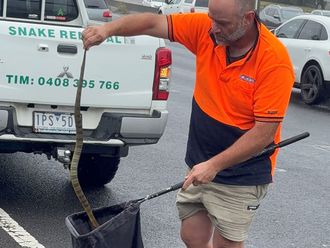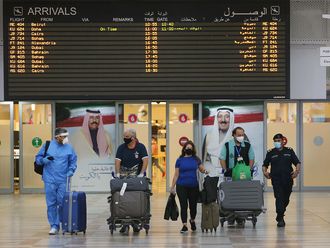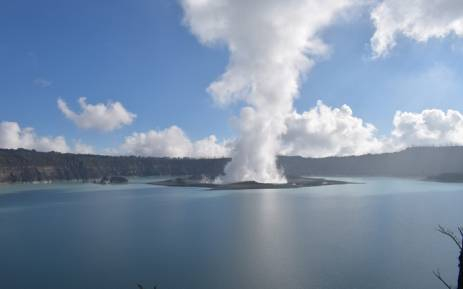
WELLINGTON: Villagers fleeing a volcanic eruption in Vanuatu face food and water shortages in overcrowded evacuation camps, aid workers and reports said Wednesday.
About 7,000 people on the island of Ambae — in the Pacific archipelago’s north — have left their homes after the Manaro Voui volcano rained rocks and ash on their villages.
Authorities have declared an emergency on Ambae island, where activity at the Manaro volcano has increased recently, raising fears of a major eruption. About 10,000 people live on the island, and villagers close to the volcano have been moved to schools and community halls on the island’s less vulnerable eastern and western regions.
For those displaced villagers, it’s now a waiting game to see whether the volcano erupts or returns to normal activity that’s not a threat to them.
Shadrack Welegtabit, the director of Vanuatu’s National Disaster Management Office, said a ship had arrived Wednesday carrying food, water and other essential supplies. He said a second ship was due to arrive Friday.
The volcano sent up a plume of steam and ash over the weekend after weeks of rumbling, prompting authorities to declare a state of emergency.
They have also upgraded Manaro Voui to a level four alert, representing a “moderate eruption state”, and warned of “flying rocks and volcanic gas” up to 6.5 km from its crater.
However, aid workers said a more immediate concern was conditions in the 35 evacuations centres set up outside Ambae’s exclusion zone.
The area was already experiencing a dry spell and ash has now blanketed crops and water sources.
Manuel Ure, a disaster coordinator with the local Penama provincial government, said conditions in the camps were difficult.
“We have very limited shelters, we have very limited food and water and other necessities … we are facing a lot of challenges at the moment,” he told Radio New Zealand.
Red Cross coordinator Augustine Garae said the continuing influx of people was putting more pressure on the camps.
“The number of evacuees is expected to rise, making facilities at evacuation centres [such] as proper toilets and sanitation not enough for everyone to access,” he told the Vanuatu Daily Post.
A boat with supplies and volunteers left the capital Port Vila on Wednesday and more are expected in the coming days.
A New Zealand Air Force plane conducted an observation flight over the volcano on Tuesday, gathering data to help scientists assess the risk of a major eruption.
The volcano, also known as Aoba and Lombenben, has three lakes in its crater and last erupted in late 2005.
On that occasion about 5,000 people were evacuated and it was three months before the volcano settled enough for them to return home.
Vanuatu’s Meteorology and Geohazards Department said in an alert that villagers within 6.5 kilometres (4 miles) of the volcano face the biggest risk from airborne rocks and volcanic gas. The department warned that acid rain could damage crops across a broader area.
Vanuatu is about one-quarter of the way from Australia to Hawaii. It’s made up of 80 islands, about 65 of which are inhabited, and is home to around 280,000 people.
The nation is considered one of the world’s most prone to natural disasters, with a half-dozen active volcanoes as well as regular cyclones and earthquakes. It sits on the Pacific’s ‘Ring of Fire’, the arc of seismic faults around the Pacific Ocean where earthquakes and volcanoes are common.


